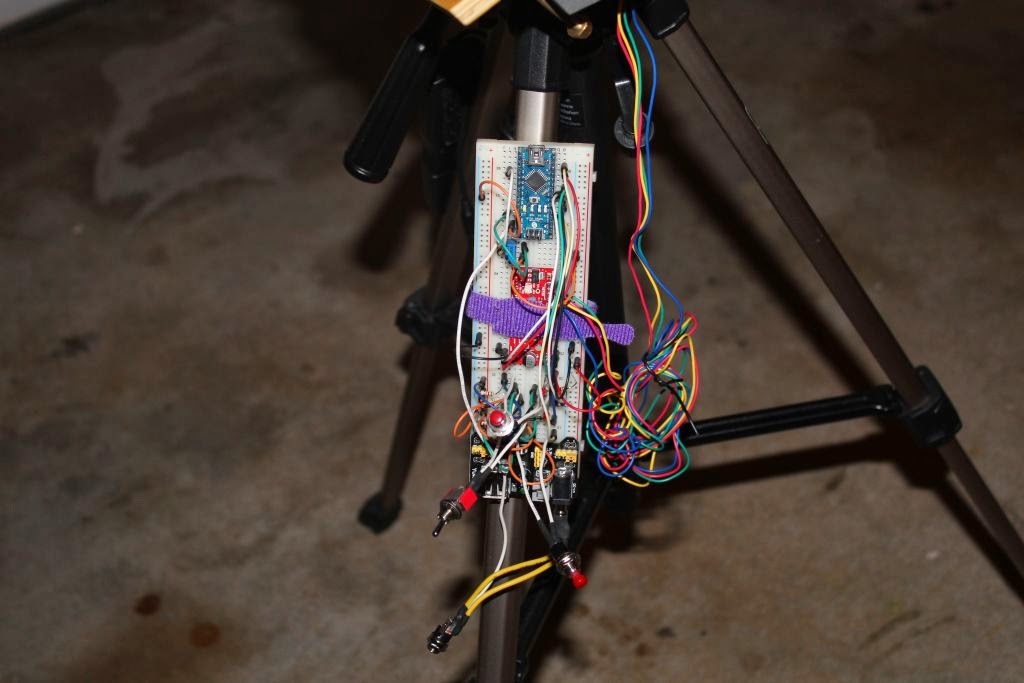Third attempt with the barn door tracker, this time using a 200 step/rev stepper motor and an EasyDriver stepper driver, which allows 1/8 microstepping.
I found that to get microstepping to work, I had to turn the current limiting pot all the way down. Without doing that, the motor would always do full steps. The pot on my EasyDriver is installed backwards, so I had to turn the pot all they way to the direction labeled max. You can tell this by measuring the voltage at the test point TP1. When you get minimum voltage, the pot is set to the minimum current. I ran the Arduino on 7.4V and the EasyDriver and motor on 5V.
This still didn't give good tracking results though. With my 135mm lens, I could expose for about 10 seconds max. Any more than that and I would get short trails. The trails were always consistent in length though. Whether I exposed for 20 seconds or 5 minutes, they were always the same length, and they were also the same length as the ones I got with the cheap eBay stepper motor. This tells me the motor and code aren't the issue. I suspect the problem is my gears. Maybe some imperfections in the gears or somewhere else in the drive train is causing the problem.
So for my next attempt, I'm going to build a different design of tracker. This time with a straight shaft instead of a curved one. Rather than a consistent stepping rate for the curved shaft, I will need to vary the speed of the motor with the straight shaft to account for the tangent error of the design. I've found several sites online that cover the design, but I think the most complete and informative one is ZZJ's Barn Door Tracker. He covers a lot of the details of the design, measurements, and calculations. I will use most of the same components for the drive circuit and the 200 step/rev motor.
I spent the afternoon today cutting the wood and plastic parts for it, we'll see how it come out.




No comments:
Post a Comment